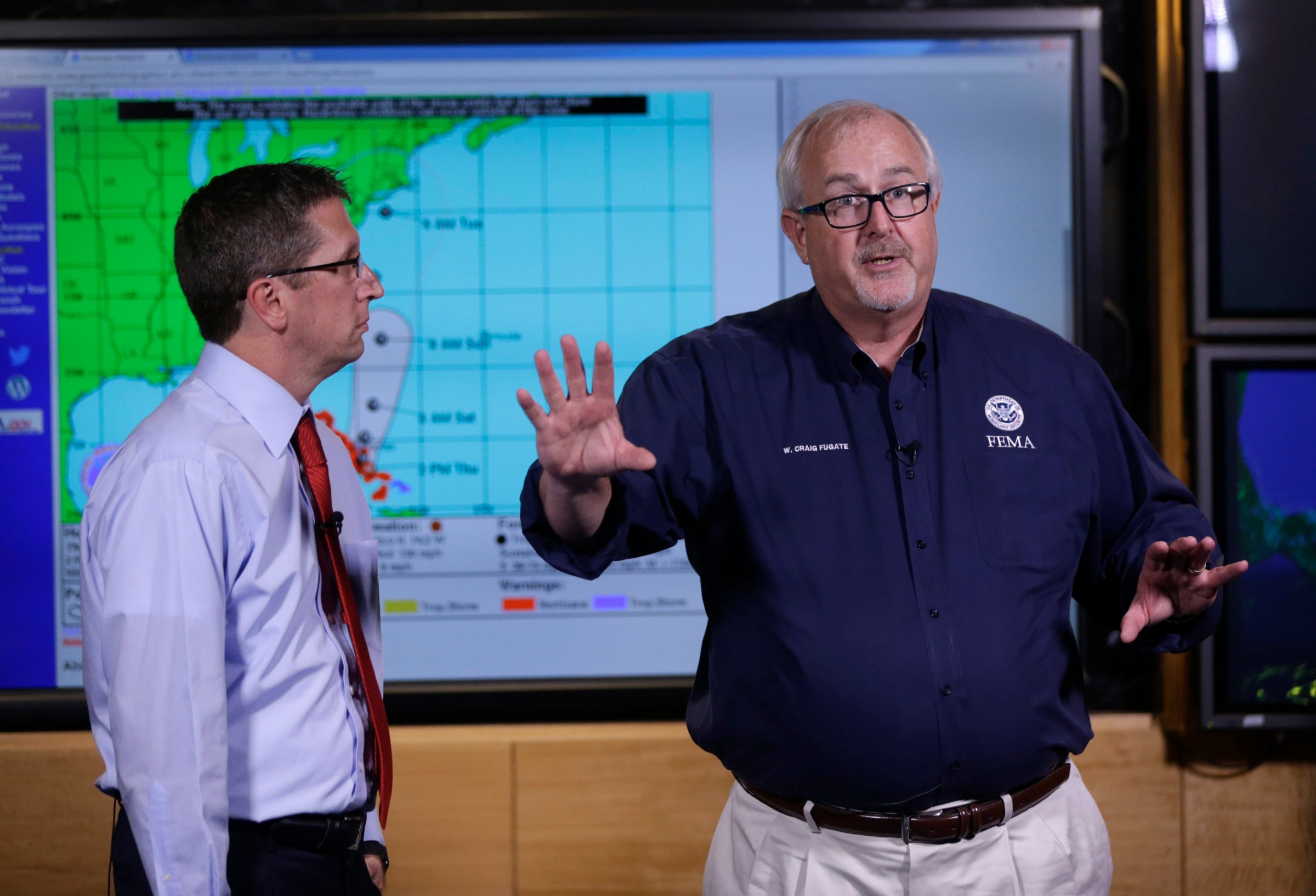
Public officials along the East Coast mobilized to protect their communities on Thursday as Hurricane Joaquin continued moving northward from the Caribbean with the potential to hit some of the most populated parts of the U.S., including many already in states of emergency like Virginia, Maryland and New Jersey. But despite the early response from leaders, disaster experts say the region still lacks many key protection measures nearly three years after Superstorm Sandy devastated the area.
The devastation and cost of Sandy exposed the deep lack of preparation for killer hurricanes in New York City. The $71 billion in damage shocked federal, state and local governments into committing billions of dollars to a number of large-scale projects to make locations in the New York-New Jersey resilient to hurricanes area.
“For the past few years, my career has been overwhelmed with the word resiliency,” said Andrew Raichle, a vice president at environmental engineering company Matrix New World. “If Sandy didn’t happen, that wouldn’t have happened.”
With money allocated, changes are on the way—but they may still take decades to bear fruit. Many projects remain incomplete due to funding and planning delays, among other hold ups. In Ocean County, New Jersey, for instance, a $512-million project to extend the beach into the water and protect coastal development has an estimated completion date of 2065. In New York City, architects plan to construct a 10-mile wall around Manhattan to protect waters from flooding the city. The federal government pledged $335 million for the first stage project, which will cost $1.2 billion in total and is scheduled to break ground in 2017, but skepticism remains about whether the entire structure will be built.
Read More: These Are the Cities Most Vulnerable to the Next Katrina
But while hard infrastructure has lagged, preparation has been easier to coordinate at a local level, according to Raichle. Many coastal homeowners have raised their homes, high rise apartments have developed hurricane preparedness plans and hospitals have moved generators to the roof. Local governments are also better prepared than they were three years ago and have improved storm response plans. They’re now paying closer attention to storm surge—the extreme flooding that can occur when hurricane winds push elevated sea levels far into land, which was responsible for much of the damage done by Sandy. Since that storm, national weather forecasters have issued more precise predictions that local disaster response officials can use to prepare, according to University of Maryland Senior Research Engineer Sandra Knight.
The New York City region is often considered one of the four cities that would be most vulnerable to a major hurricane, but Hurricane Joaquin could also have a devastating impact lower on the coast in Maryland, Virginia and Washington D.C. Many communities have grown near the coast in this region in recent years and the effects would be particularly harmful given flooding in recent days due to other storms.
“We’re at a critical junction in the nation where we’re going to see rising impact of coastal storm impacts because more people move to the coast and that coupled with climate change,” said Knight.
Still, Hurricane Joaquin may turn out to be a dud for the East Coast if the storm veers out into the Atlantic Ocean, as many models suggest, rather than hitting the Atlantic seaboard. But experts remain concerned about flooding due to rain and wind along the coast from a separate storm. Rain has already caused widespread flooding and is expected to continue in the coming days. And even if Joaquin doesn’t hit the coast, the hurricane is large enough to cause problems along the coast, including increased storm surge. (Sandy caused high winds as far as 1,000 miles away from its center).
“They’re not out of the woods by any means,” said Jeff Waters, a manager at RMS, a risk management company. “There are a variety of factors that will be impacting the eastern seaboard over the next couple days.”
More Must-Reads from TIME
- Donald Trump Is TIME's 2024 Person of the Year
- Why We Chose Trump as Person of the Year
- Is Intermittent Fasting Good or Bad for You?
- The 100 Must-Read Books of 2024
- The 20 Best Christmas TV Episodes
- Column: If Optimism Feels Ridiculous Now, Try Hope
- The Future of Climate Action Is Trade Policy
- Merle Bombardieri Is Helping People Make the Baby Decision
Write to Justin Worland at justin.worland@time.com